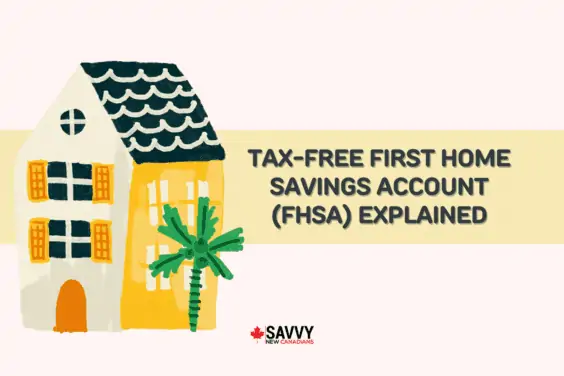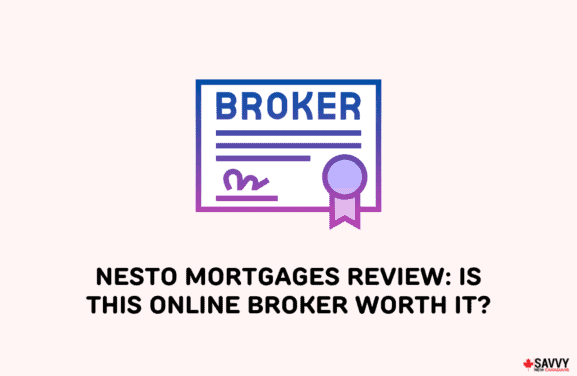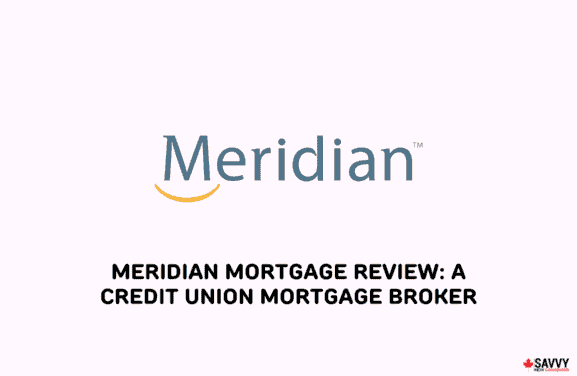When you are in the market for a house to rent or buy, you will be confronted with a wide range of property types.
Detached homes, townhouses, duplexes, and movable homes are just some of the different types of houses in Canada.
Being familiar with the various properties can help you choose the ideal house for your needs. So, read on to find out more about them.
Key Takeaways
- Detached and semi-detached houses, townhouses, duplexes, bungalows, and movable homes are among the different types of houses in Canada.
- The average cost of a home in Canada in 2022 was approximately CA$704,000.
- The average sold price of a house in Canada in March 2023 was $686,371.
Types of Houses to Buy or Rent in Canada
As you can see from the list below, Canada is home to a diverse range of property types that you can buy or rent.
The common types of houses for rent in Canada are detached, semi-detached, townhouses, and duplexes.
As for the type of property you can buy, it depends on your preferences and your budget.
Semi-Detached Houses
A semi-detached house in Canada is essentially two single-family homes joined on one side, usually sharing a side or back wall.
Semi-detached houses are in different sizes but share some things in common. Each unit has its own entrance, surrounding land, and individual access to the street.
Compared to a detached home, a semi-detached dwelling is cheaper because of the shared attributes that result in lesser privacy for each household.
Detached Houses
Detached houses are dwellings that stand on their own, do not have any shared wall, are not attached to other houses, and typically have front and backyards.
Compared with other property types, they have more space and privacy. They are among the most common in Canada and often the most expensive.
Owners of detached homes own the entire property and the land on which the house stands. They are responsible for the maintenance of the property, repairs, utility payments, and taxes.
A detached house has different types as you can see below:
2-Storey Houses
One of the most common types of detached houses in Canada, a 2-storey dwelling offers the most when it comes to overall space.
The lower level typically is where areas like the kitchen and living room are located, with the sleeping spaces often assigned to the upper level.
It is ideal for families as the top and bottom storeys have multiple rooms and extra space for office use or storage.
Split-Level Homes
Split-level homes have unique designs that maximize vertical space. They usually have a staggered structure and are built on sloping areas.
The main level is where the living room, kitchen and dining room are usually located. The other side will have a split-level feature with short flights of stairs leading up to the bedrooms and down to a basement or garage.
Their most common features are large living rooms, family rooms, low-pitched roofs, integrated garages, and expansive yards.
Bungalows
Bungalows are one-storey detached homes with all rooms and areas on one level. They are an older property type that you often find in rural areas.
These houses may have a large living area, hallways, rooms on either side of the home, and an integrated garage.
They may also have a single flight of stairs that lead up to another room, a bedroom or a study area on the attic level, and may or may not have a basement.
Cottages
Cottages are tiny, detached homes with large porches or patio areas. It is common to find them in areas close to the natural environment.
These dwellings may have one or two bedrooms and a single open space where the living room, dining room, and kitchen are located.
Cottages are usually used for vacations or as residences for short durations. Due to Airbnb, cottages have grown in popularity, especially for those who like to be surrounded by nature.
Townhouses
A townhouse refers to two- or three-storey houses connected to other units through a shared wall on each side of the house, except for end units.
These dwellings may have patios or outdoor yard spaces, with some having sub-ground level garages. They are often in clusters with shared amenities like a swimming pool or a playground.
Townhouses are cheaper than detached and semi-detached houses. Due to their style, proximity to downtown areas, flexibility, and affordability, they are among the most common types of houses for rent in Canada.
There are different types of townhouses in Canada:
Condominium Townhouses
Condo townhouses are apartment units found in high-rise or multi-unit buildings. With a condo, you own the inside of the unit, while the condo corporation owns the common areas and the exterior.
Condominiums are among the more affordable types of property in Canada, but there are aspects to consider if you plan to buy a unit.
Condo owners can make changes to their units only if these do not impact the structural integrity of the building. Living in a condo also means paying compulsory condo fees for building maintenance and shared amenities.
Related: Condo Maintenance Fees Cover
Freehold Townhouses
A freehold townhouse is a type of dwelling wherein you own the entire unit, the land the property is on, and the front and back yards.
With this type of residence, you are responsible for maintaining your part of the property, as no homeowners association or condo corporation collects fees.
Freehold townhouses tend to be more popular than condo townhouses since there are no maintenance fees, but you may also spend more upfront.
Stacked Townhouses
A stacked townhouse is a one- or two-storey townhouse piled or “stacked” on top of each other and often found in more modern cities.
It is a cross between a townhouse, since it is an attached dwelling with its own front door, and a condo since it is a multi-unit building.
Compared with condo townhouses, stacked townhouses are more separated in that they have their own exterior front doors, and there are no shared amenities like lobbies or elevators.
Duplexes
A duplex is a multi-family housing structure with two homes under a common roof, and each unit has a separate entrance and utility meter.
The smallest multi-family home in the market, a duplex usually has a split-level feature, with full bottom and top floors, and serves as a single home.
It is common for duplex owners to live in one unit and rent out the other to short-term visitors or tenants.
Moveable Houses
A movable house is a single dwelling you can relocate or transport anytime. Mobile or trailer homes, caravans, and floating homes are under this category.
These houses are livable all year round and can be insulated to provide protection during cold months. They are also generally less expensive than other property types.
Owners of mobile homes do not usually own the property their units are on. Their dwellings are small and independent, allowing them to easily move to new locations.
How Much Does It Cost To Rent Or Buy a Home in Canada?
Data from Statista show that the average cost of a home in Canada in 2022 was approximately CA$704,000, with experts forecasting it to decline to CA$663,000 in 2023.
According to figures from the Canadian Real Estate Association (CREA), the average sold price of a house in Canada in March 2023 was $686,371.
Here are the average home prices in some regions of Canada:
- Greater Toronto Area – $1,108,606
- British Columbia – $961,451
- Ontario – $881,946
- Calgary – $535,743
- Quebec – $451,313
- Nova Scotia – $404,912
- Saskatchewan – $307,275
- Newfoundland (St. John’s) – $273,967
Meanwhile, figures from Statistics Canada and the CMHC revealed that the average rent for a 2-bedroom unit in Canada in 2020 ranged from $899 in Quebec City, QC, to $1,792 in Vancouver, BC.
In other Canadian markets, the average rent costs in 2020 for the same property type are as follows:
- Greater Toronto Area, ON – $1,622
- Ottawa, ON – $1,517
- Victoria, BC – $1,507
- Calgary, AB – $1,323
- Winnipeg, MB – $1,262
- Montreal, QC – $903
- Quebec City, QC – $899
Government Housing Programs and Incentives in Canada
The government of Canada has several home-buying programs and incentives aimed at helping buyers purchase their homes.
- Home Buyers’ Amount. This is a non-refundable tax credit of up to $1,500.
- GST/HST New Housing Rebates. These are rebates for some of the taxes you pay when purchasing a home.
- Home Buyers’ Plan (HBP). This allows you to take out money from your registered retirement savings plans (RRSPs) to buy a home. The current limit is $35,000.
- First-Time Home Buyer Incentive. With this incentive, you may get 5% or 10% of the purchase price to pay toward a down payment.
- First Home Savings Account (FHSA). This is a registered plan that helps you save up to $40,000 tax-free to purchase a home, with an annual contribution limit of $8,000.
You may also be eligible for affordable government housing in Canada if you meet their set criteria. For more information, go to Canada Mortgage and Housing Corporation.
How to Buy a Home in Canada
Buying a home is the biggest and the best long-term investment you can make. That’s why it is crucial to understand the essential steps in home-buying in Canada.
- Save for a down payment. The down payment can be between 5% and 20% of the purchase price. The bigger your down payment, the easier it is for you to get a mortgage. Read about the ways to save for a home down payment in Canada.
- Save for your closing costs. Aside from the down payment, closing costs are another home-buying aspect to prepare for. Generally, closing costs range from 1.5% to 4% of the home purchase price.
- Prepare yourself financially. Before buying a home, get your finances in order and have a reliable source of income. According to Ratehub.ca, you must earn between $75,650 and $221,580 annually to purchase a home in major Canadian cities.
- Get a mortgage pre-approval. Obtaining a mortgage pre-approval means that your bank has committed to loan you the money you need to purchase your home, although it is subject to conditions that your lender will provide in detail. Learn more about getting a mortgage as a first-time home buyer in Canada.
- Tap into your first-time home buyer benefits. Take advantage of the incentives Canada offers to first-time home buyers. These include Home Buyers’ Amounts, GST/HST New Housing Rebates, HBP, First-Time Home Buyer Incentives, and FHSA.
- Get professional help. Having experts can make the home-buying process smoother. Your team of professionals should include a lender, mortgage broker, realtor, home inspector, appraiser, land surveyor, insurance broker, and lawyer.
- Start house-hunting. With the help of your realtor, check real estate listings to find options that meet your requirements. Going online can also help you find potential homes to buy.
- Close the deal. During the final home-buying phase, finalize your mortgage loan, obtain the necessary documents, sign all paperwork, and perform all other tasks related to your home purchase until you are cleared to move in and receive your keys.
If this is your first home, read the detailed home-buying guide on buying a house in Canada as a first-time home buyer.
FAQs
The detached home is the most popular type of house in Canada due to its space, size and privacy. In 2021, it made up about 53% of the country’s housing supply. Additionally, Statista predicts detached single-family homes in the country will climb to 7.89 million in 2023.
A residential house in Canada is a type of property built on land or structure meant for private dwellings and may be temporary or permanent. It includes single-detached and semi-detached houses, townhomes, condominium apartments, row houses, and mobile homes.
Most Canadian houses have attics often filled with insulation, electrical wiring, and HVAC equipment. These spaces help regulate temperatures in the home and are usually for storing various things.
Houses in Canada have basements for several reasons, such as to ensure the footer is located below the frost line and works effectively during winter. The basement also provides sufficient space to store equipment and has extra room for various other purposes.
Related:



